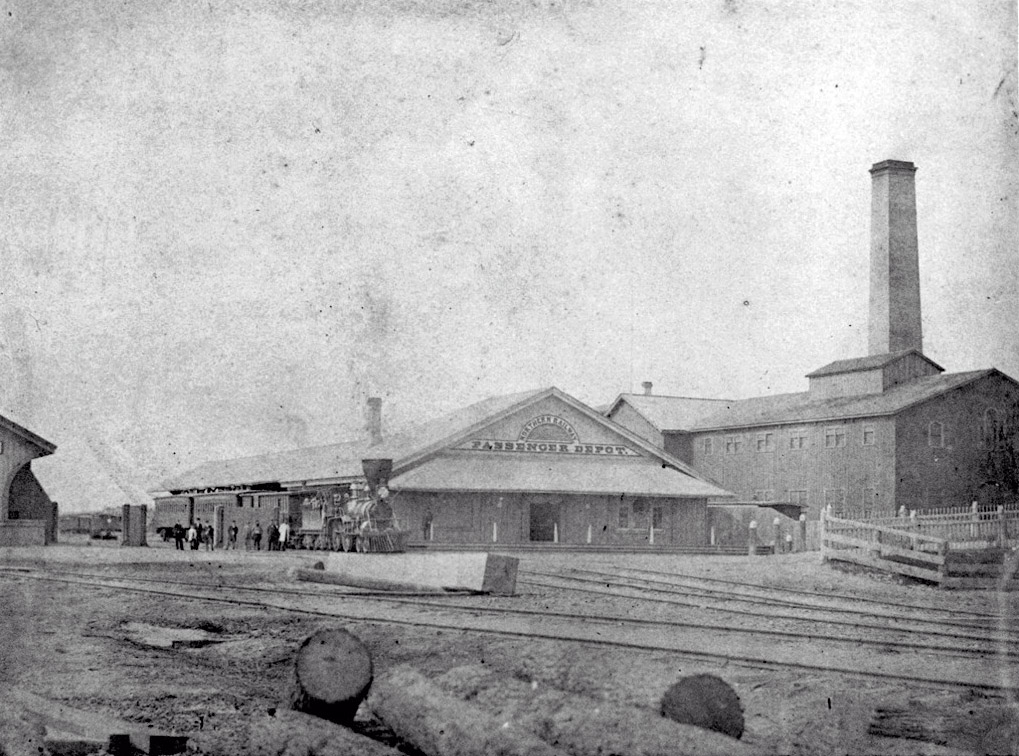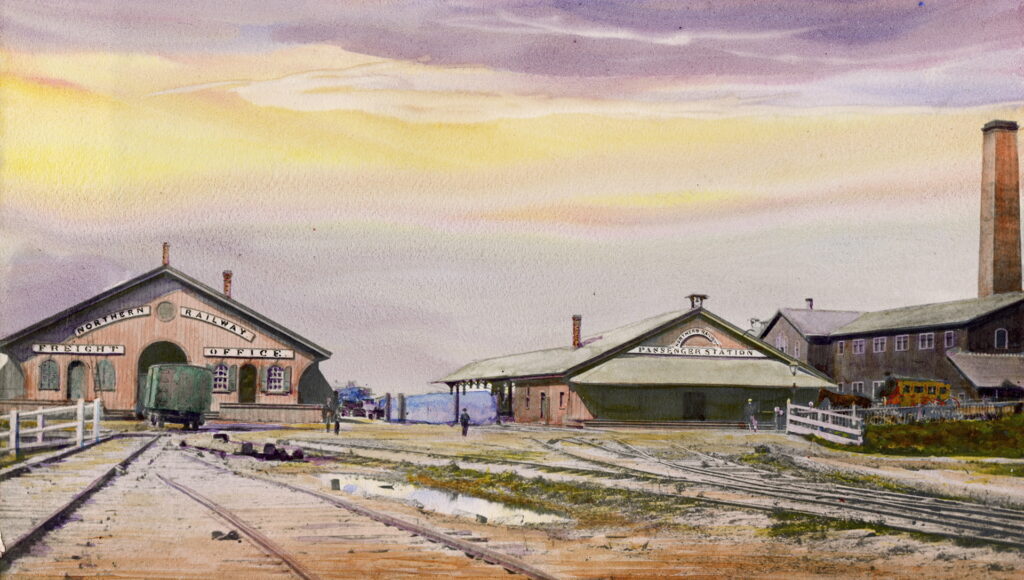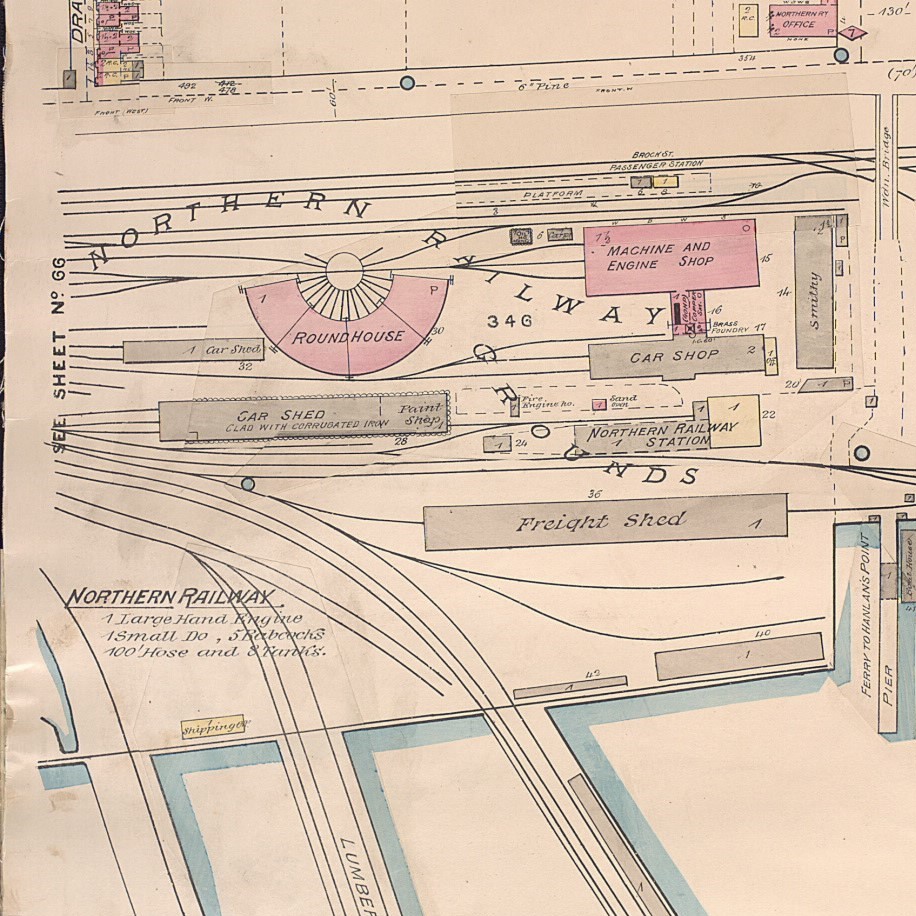Summary
The very first passenger station in Toronto was built by the Ontario, Simcoe & Huron Railway whilst it was under construction between Toronto and Collingwood. It was located at the foot of Bay Street on a narrow sliver of land between Front Street and the shore of Lake Ontario. While no photographs of this station are known to exist, maps and firsthand descriptions from the time speak of a small wooden shed providing only the most basic amenities for passengers. As construction of The Esplanade allowed more space for tracks, the Grand Trunk Railway soon joined the OS&H at Bay Street, building a temporary passenger station adjacent to theirs in 1857. On October 18th, 1857, the OS&H station caught fire and burned to the ground before fire crews arrived. The wreckage was cleared shortly afterward and work began on a new passenger station elsewhere. In the meantime, the OS&H entered an agreement with the Grand Trunk to share its new passenger terminal which was then under construction. Toronto’s first Union Station opened on June 21st, 1858, and it was immediately served by trains of the Grand Trunk Railway, Ontario, Simcoe & Huron Railway, and Great Western Railway simultaneously.
A few years after the OS&H reorganized as the Northern Railway of Canada in 1858, trains began using its new passenger terminal at Brock Street (now Spadina Avenue) on January 9th, 1861. The new station was a basic wooden structure with a pitched roof and a canopy shelter extending to the west side of the platform. A sign reading “Northern Railway Passenger Station” was positioned on the east-facing exterior wall. It was nestled directly in the middle of the Northern Railway’s maintenance shops, about where the intersection of Fort York Boulevard and Telegram Mews is today. While this placed it at a somewhat inconvenient jog from where many residents of Toronto lived, it was well positioned to take advantage of steamship traffic on Lake Ontario. The Northern Railway built a new passenger station about two kilometres to the east at Jarvis Street in 1867, though the Spadina Avenue station would continue to see train service.
In 1879, the Northern Railway merged with its rival the Hamilton & North-Western Railway, under the name Northern & North Western Railway. Less than a decade later the Northern & North Western was itself merged into the much larger Grand Trunk Railway in 1888, prompting the closure and removal of the Spadina Avenue station. Shortly afterward the Grand Trunk built a small commuter stop at Spadina Avenue about 200 metres north of the former Northern Railway station site. No photos are known to exist of this stop, but according to maps of the area from the time it would have only included a small shelter and a single platform. It disappeared from maps in the early 1900’s. The proposed Spadina-Front GO Station will be located almost exactly where this commuter stop was. Upon its expected opening in 2024 this new GO station will return direct passenger rail service to this part of the city for the first time in over a century.
Condensed Station Info:
| Location: | Served By: | Current State: | Date Built: | Date Demolished: |
| Front Street & Bay Street (First) Spadina Ave & Fort York Blvd (Second) | NRC (1853 – 1879) N&NW (1879 – 1888) | Demolished (Both) | 1853 (First) 1861 (Second) | 1857 (First) 1888 (Second) |




